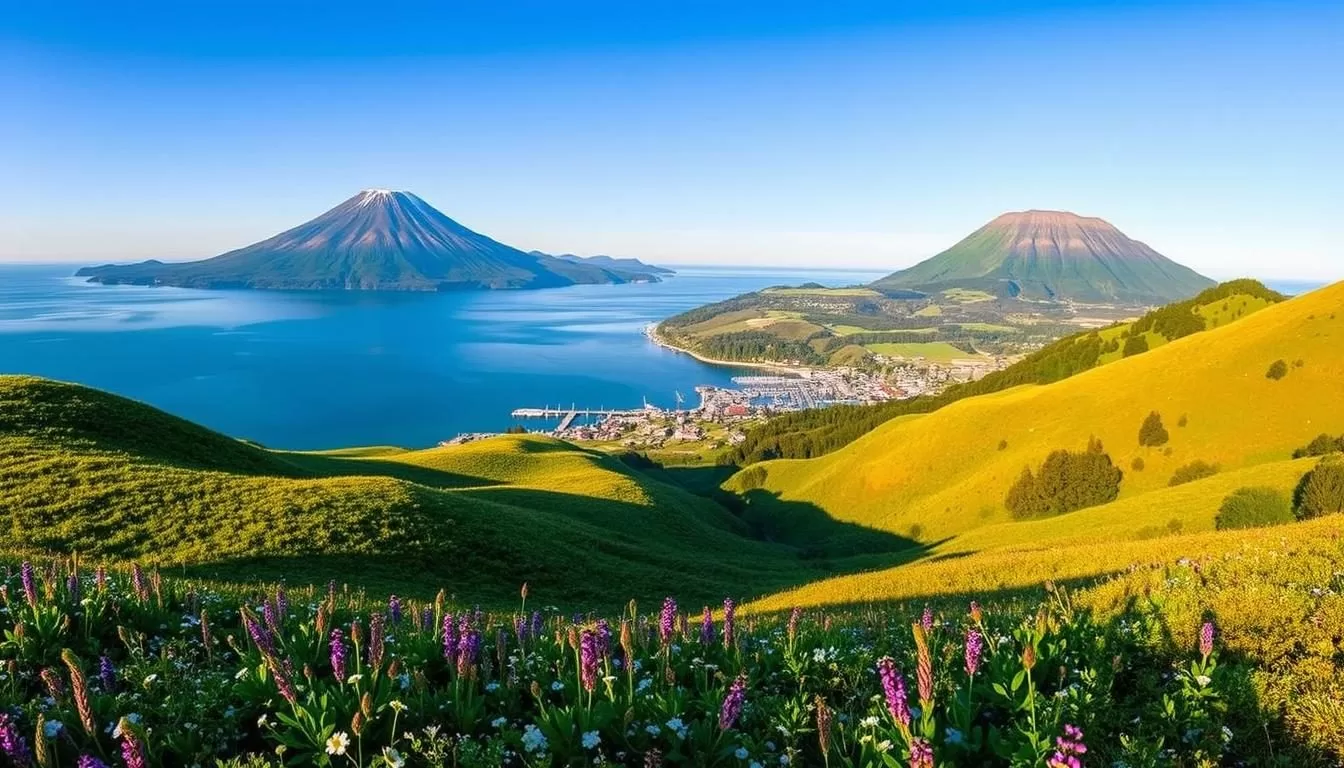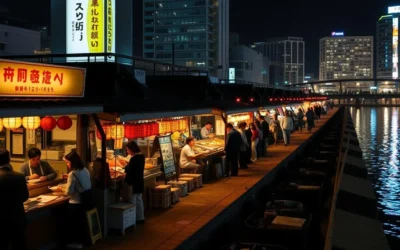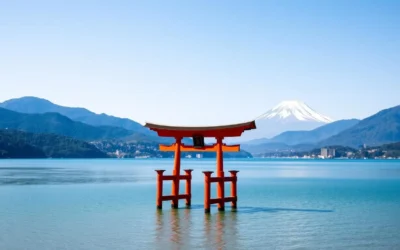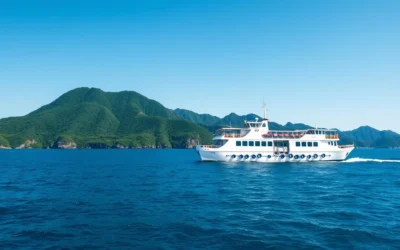✓ Accommodations✓ Flights✓ Rental Cars
When planning a trip to Japan, you’re likely drawn to the vibrant cities like Shinjuku, Kyoto, and Osaka. However, this country has much more to offer beyond its urban landscapes.
With 34 national parks, Japan is a haven for nature lovers. One of its most breathtaking yet lesser-known gems is located in the northernmost region of Hokkaido.
You can discover pristine landscapes and unique natural attractions on this island, offering a perfect escape from the bustling cities. The area encompasses two stunning islands and an expansive plain, each providing unique outdoor activities and experiences.
From challenging hikes to gentle walks, this park caters to all types of nature enthusiasts. You’ll learn about the top experiences and practical travel information to make the most of your visit.
Discovering Japan’s Northern Gem
In the far north of Japan lies Rishiri Rebun Sarobetsu National Park, a treasure trove of natural beauty and diverse wildlife. This national park, comprising the islands of Rishiri and Rebun, along with the Sarobetsu Plain on the mainland, offers a unique blend of landscapes and ecosystems.
Location and Geography of the Park
Rishiri Rebun Sarobetsu National Park is located off the coast of Hokkaido, Japan’s northernmost island. The park’s diverse geography includes volcanic islands, wetlands, and alpine meadows. The park is home to an eclectic family of local wildlife like spotted seals and Sika deer. The area’s varied landscapes support a wide range of flora and fauna, making it a fascinating destination for nature enthusiasts.
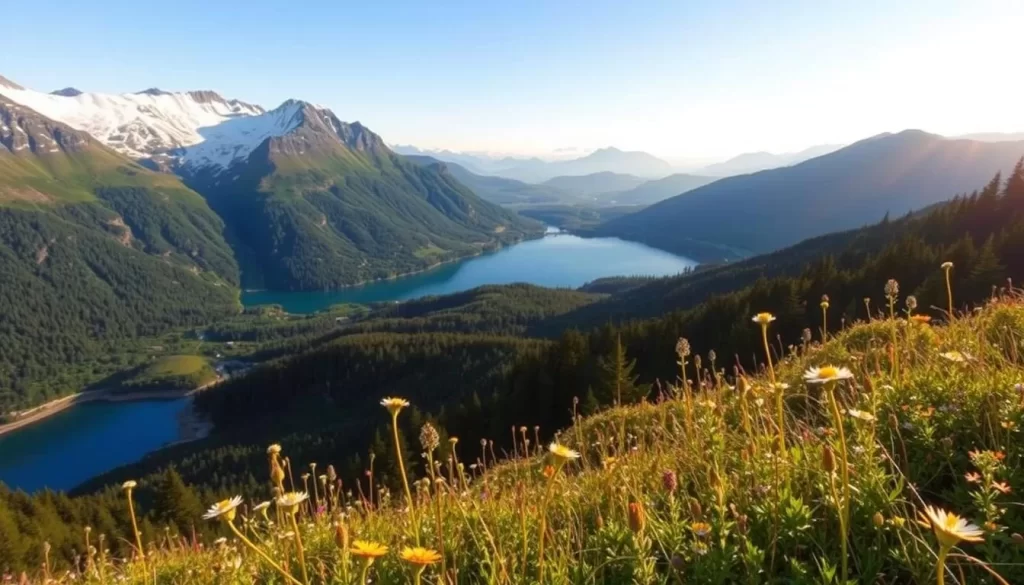
Best Time to Visit
The optimal time to visit Rishiri-Rebun-Sarobetsu National Park varies depending on your interests.
- The short summer season from June to August is ideal for hiking and viewing alpine flowers in full bloom.
- Spring (late May to early June) offers the first flowers and fewer crowds, though some trails may still have snow.
- Winter transforms the park into a dramatic landscape with drift ice and snow-covered mountains, but access is limited.
| Season | Activities | Conditions |
|---|---|---|
| Summer (June to August) | Hiking, Alpine Flower Viewing | Mild Temperatures, Full Bloom |
| Spring (Late May to Early June) | Wildflower Displays | Fewer Crowds, Some Snow on Trails |
| Winter | Drift Ice Cruises, Snow-covered Landscapes | Limited Access, Cold Temperatures |
Exploring Rebun Island: The Island of Flowers
Rebun Island, with its lush alpine meadows and rugged coastlines, offers an unparalleled hiking experience in Japan. As you explore the island, you’ll discover a variety of landscapes, from grassy peaks to black sand beaches.
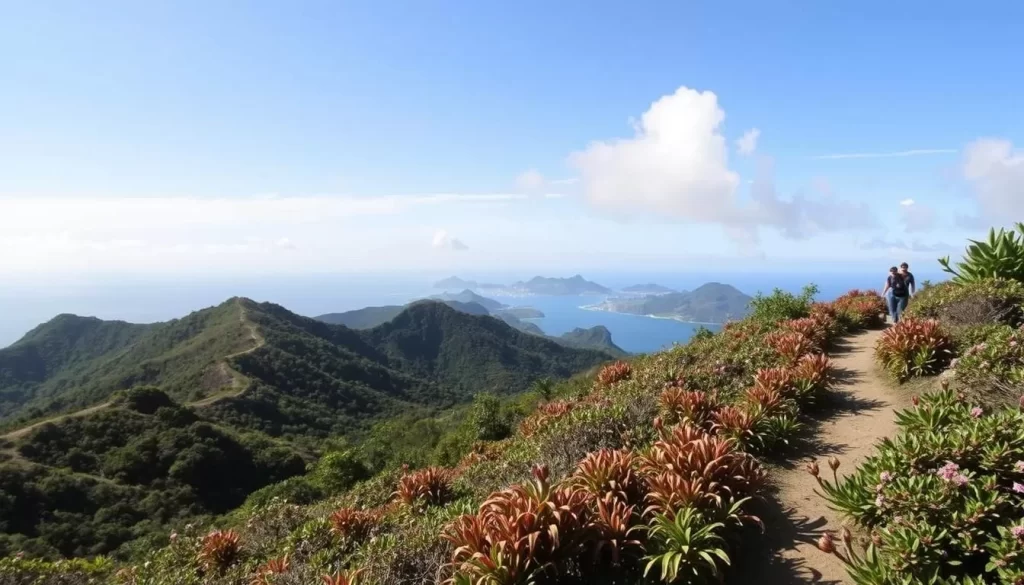
Cape Sukoton: Panoramic Ocean Views
Cape Sukoton is a must-visit destination on Rebun Island, known for its breathtaking ocean views and unique musical toilet. The cape serves as the starting point for the Hachijikan Hiking Course, a challenging 16.5-kilometer trail that traverses the island from north to south.
Momoiwa Trail: Peach Rock and Alpine Meadows
The Momoiwa Trail offers a unique hiking experience, taking you through alpine meadows and along the coast. The trail is known for its stunning views of the surrounding landscape and the iconic Peach Rock.
Hachijikan Hiking Course: The Ultimate Rebun Experience
The Hachijikan Hiking Course is the ultimate Rebun Island experience, offering a challenging 16.5-kilometer north-south traverse that typically takes eight hours to complete. Starting from Cape Sukoton, this famous hiking trail takes you across the entire island, passing through diverse landscapes, including grassy peaks, clifftop meadows, forests, and black sand beaches.
- The course is physically demanding, with some steep sections and narrow paths along cliff edges.
- You’ll need to start early, around 6:00 am, and pack plenty of water and snacks, with several designated rest areas along the route.
- Local bus services can take you to the trailhead at Cape Sukoton, and you can arrange transportation from the southern endpoint.
Rishiri Island Adventures
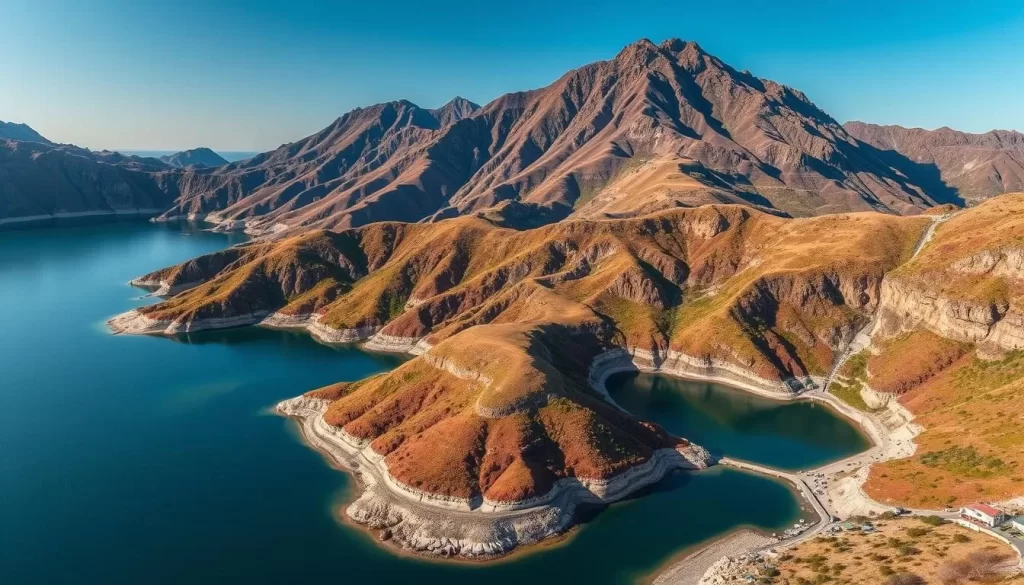
For those who crave adventure, Rishiri Island is a must-visit destination in Japan. The island offers a variety of exciting activities that cater to different interests and fitness levels.
Conquering Mount Rishiri: A Challenging Summit
Mount Rishiri, an iconic volcanic peak, presents a challenging yet rewarding hiking experience. The summit offers breathtaking 360-degree views of the island and the Sea of Japan. Hikers can expect a rigorous climb, but the panoramic views from the top make it an unforgettable adventure.
Lake Himenuma: Reflections of Mount Rishiri
Lake Himenuma, a picturesque lake on Rishiri Island, provides a serene contrast to the rugged mountain terrain. The lake’s calm waters reflect the majestic beauty of Mount Rishiri, creating a perfect spot for photography and relaxation.
Cycling Around the Island: Coastal Exploration
Cycling around Rishiri Island is a leisurely way to explore the island’s scenic coastline. The 60-kilometer circular route takes you around the base of the volcanic mountain, offering spectacular sea views and diverse landscapes. You can rent bicycles in Oshidomari, the main port town, and enjoy the dedicated cycling course that alternates between coastal roads and forested areas.
The cycling course is well-engineered, with high suspension bridges spanning mountain streams, adding to the excitement of your ride along the coast.
Flora and Fauna of Rishiri-Rebun-Sarobetsu
As you explore Rishiri-Rebun-Sarobetsu, you’ll discover the rich biodiversity that characterizes this northern Japanese gem. The park’s diverse ecosystems support a wide range of flora and fauna, making it a fascinating destination for nature enthusiasts.
Endemic Alpine Flowers: Rebun’s Natural Treasure
Rebun Island is renowned for its vibrant alpine flowers, which bloom in the island’s meadows during the summer months. The unique flora of Rebun includes a variety of endemic species that can be found nowhere else in Japan. Visitors can enjoy the breathtaking beauty of these flowers along the Momoiwa Trail and other hiking courses.
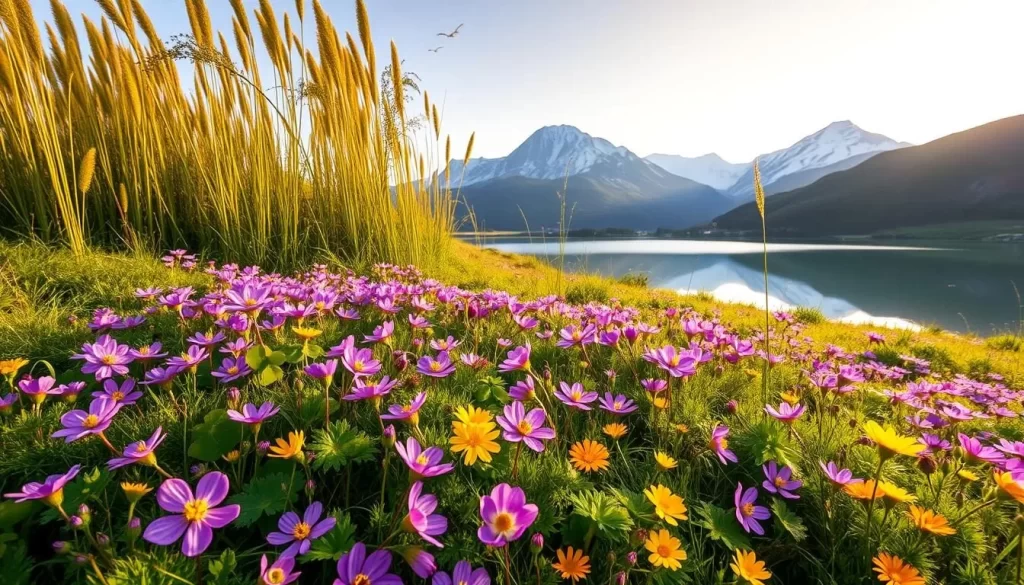
Wildlife Watching Opportunities
The park offers numerous wildlife watching opportunities throughout the year. In the coastal waters around Rishiri and Rebun islands, you can spot marine mammals such as spotted seals and sea lions. The Sarobetsu wetlands area is an important stopover for migratory birds, making it an excellent spot for birdwatching.
| Wildlife | Location | Best Time to Spot |
|---|---|---|
| Spotted Seals | Coastal waters around Rishiri and Rebun | Summer months |
| Migratory Birds | Sarobetsu wetlands | Spring and fall migrations |
| Sea Lions | Todo Island near Cape Sukoton | Throughout the year |
The area is also home to Hokkaido sika deer and various small mammals. In winter, the drift ice brings unique marine species, creating dramatic landscapes along the shoreline.
Sarobetsu Plain: Wetland Wonders
As you explore Rishiri Rebun Sarobetsu National Park, the Sarobetsu Plain stands out as a must-visit destination for its breathtaking wetland landscapes. This unique area is a haven for nature enthusiasts and those looking to experience the diverse beauty of Japan’s northernmost regions.

Sarobetsu Wetland Center: Gateway to the Marshlands
The Sarobetsu Wetland Center serves as an ideal starting point for your exploration of the marshlands. It provides valuable insights into the ecosystem and the unique flora and fauna that call this wetland home. During spring and summer, the center offers guided tours that enhance your understanding and appreciation of the area.
The Sarobetsu Plain, part of the Rishiri Rebun Sarobetsu National Park, is known for its vibrant wildflowers that bloom in succession, creating a colorful tapestry across the wetlands.
Sarobetsu Primeval Flower Garden: Seasonal Blooms
The Sarobetsu Primeval Flower Garden is a highlight of the Sarobetsu Plain, showcasing the region’s unique wetland flora. As spring summer arrives, the garden comes alive with a variety of wildflowers, including the striking Ezo kanzou daylilies that bloom from late June to early July.
With its wooden walkways, the garden allows visitors to explore the marshland ecosystem without disturbing the delicate environment. The garden’s spring and summer blooms are a testament to the area’s natural beauty, making it a must-visit during these seasons.
Cultural Experiences in the National Park
As you explore Rishiri-Rebun-Sarobetsu National Park, you’ll discover a rich cultural heritage that is deeply connected to the natural environment. The park’s unique cultural identity is shaped by its island location and the bounty of the surrounding seas.
Traditional Seaweed Harvesting: Rishiri Kombu
The area is renowned for its high-quality Rishiri Kombu seaweed, a staple ingredient in Japanese cuisine. Local people harvest this marine crop using traditional methods, ensuring its sustainability. The seaweed is then used in various local dishes, adding a distinctive umami flavor to soups, stews, and side dishes.
Local Cuisine and Specialties
Sampling local cuisine is an essential part of experiencing Rishiri-Rebun-Sarobetsu National Park. The island offers specialties that reflect the freshness of the surrounding seas. You can savor fresh seafood, including sea urchin, a popular dish in Japan, harvested sustainably by local people. Many restaurants and minshuku (family-run guesthouses) offer set meals featuring a variety of local specialties, giving you the opportunity to sample multiple regional flavors in one sitting.
| Local Specialty | Description |
|---|---|
| Sea Urchin (Uni) | A prized delicacy harvested sustainably by local people |
| Rishiri Kombu Seaweed | High-quality seaweed used in various local dishes |
| Fresh Seafood | Just-caught fish, squid, crab, and shellfish prepared using traditional Hokkaido cooking methods |
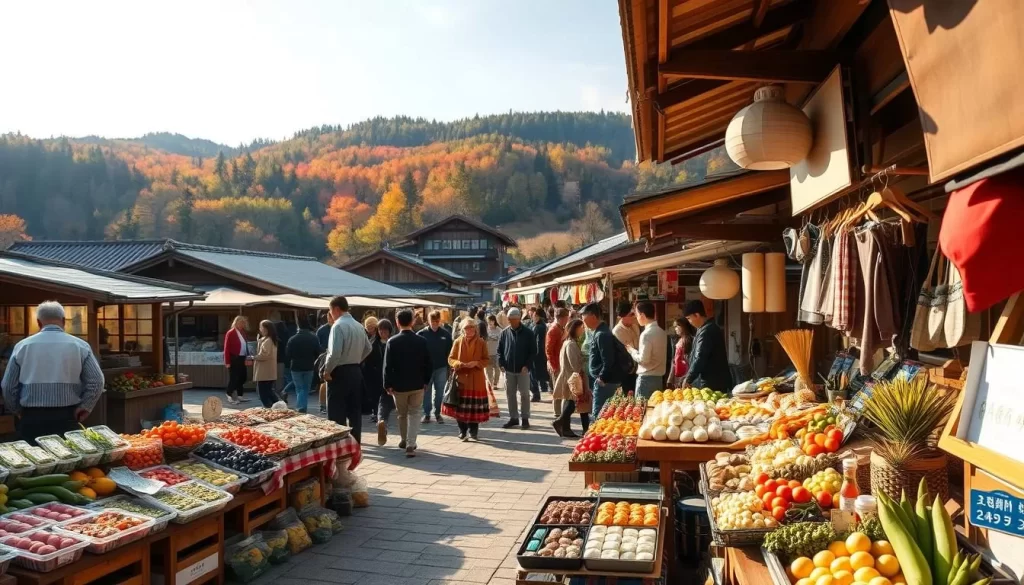
Practical Information for Visitors
To ensure a smooth and enjoyable journey, it’s essential to be prepared with the right information before heading to Rishiri Rebun Sarobetsu.
Getting to Rishiri-Rebun-Sarobetsu National Park
The most common way to reach Rishiri and Rebun Islands is by ferry from Wakkanai, a city on the northern tip of Hokkaido. The ferry ride offers scenic views of the Sea of Japan and surrounding islands. You can check the latest ferry schedules and book your tickets in advance through the Heartland Ferry website or at the Wakkanai Ferry Terminal.
For those exploring the Sarobetsu Plain, bus services are available from nearby towns like Wakkanai and Toyotomi, providing convenient access to the wetland areas.
Accommodation Options
You have a range of accommodation options within Rishiri-Rebun-Sarobetsu National Park, from traditional Japanese inns (ryokan) and family-run guesthouses (minshuku) to modern hotels and budget-friendly hostels. On Rebun Island, most lodging is concentrated in the main town of Kafuka near the ferry port. The Momoiwa-so Youth Hostel is a popular choice for backpackers and budget travelers. On Rishiri Island, hotels and ryokans are primarily located in Oshidomari town, with some featuring onsen (hot spring) baths. It’s advisable to stay in nearby Toyotomi or Wakkanai if you’re planning to explore the Sarobetsu Plain, with bus services connecting you to the wetland areas.
During peak summer season (July-August), options fill up quickly, so booking your preferred accommodation well in advance is highly recommended.
Seasonal Highlights and Photography Spots
As you explore Rishiri Rebun Sarobetsu National Park, you’ll discover a world of breathtaking views and photography opportunities. The park’s diverse landscapes and seasonal changes offer countless chances to capture stunning images.
Spring and Summer: Peak Flower Season
During spring and summer, the park comes alive with vibrant flowers, making it an ideal time for photography. The alpine meadows on Rebun Island are particularly noteworthy, with a variety of flowers blooming in peak season.
Best Photography Locations
Some of the best spots for photography include Cape Sukoton on Rebun Island, which offers dramatic coastal views, and Lake Himenuma on Rishiri Island, which provides perfect reflections of Mount Rishiri. The Momodai Nekodai Observatory is another must-visit spot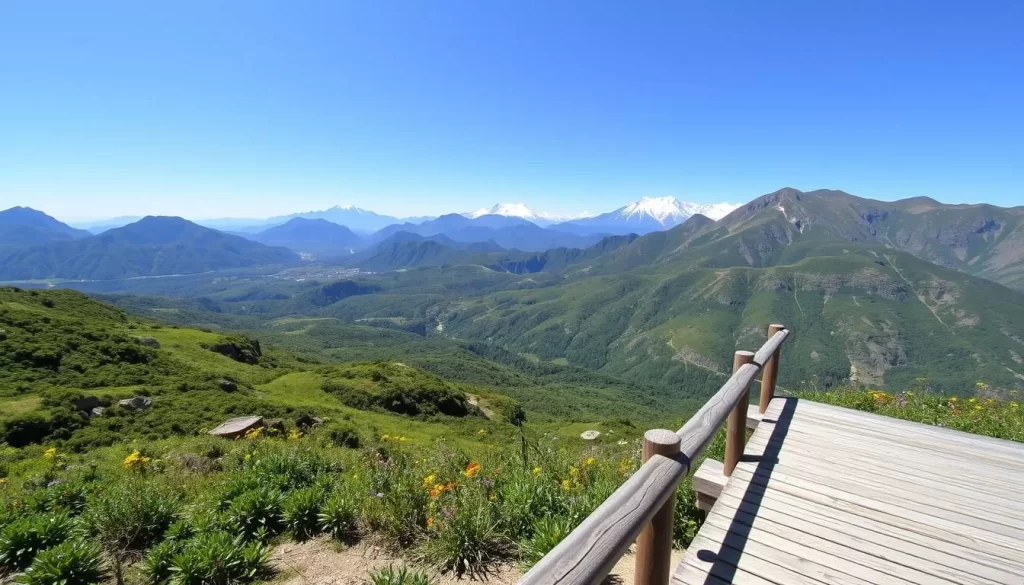
Planning Your Perfect Visit to Rishiri Rebun Sarobetsu National Park
To experience Japan’s natural beauty, visit Rishiri-Rebun-Sarobetsu National Park. Allow 3-4 days to explore the park’s diverse areas.
The best time to visit is June through August for optimal ferry services and hiking trail access. Plan your visit to include Rebun Island’s Hachijikan course, Rishiri Island’s mountain climbing, and Sarobetsu wetlands.
Winter visits offer a different experience with snowscapes and drift ice, but require more preparation.
The above is subject to change.
Check back often to TRAVEL.COM for the latest travel tips and deals.
